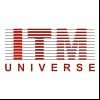
Table of Contents
MHT CET Chemistry Syllabus 2025 contains topics such as States of Matter, Chemical Kinetics, Circles and Conics, Integration and Definite Integral, etc. Students may review the Chemistry MHT CET question 2025 on the official website. This page consists of the Chemistry MHT CET weightage 2025 and detailed syllabus for reference.
Candidates must refer to the Chemistry weightage for MHT CET 2025 to organise their preparation for the MHT CET exam 2025. Concentrating on high-weight topics within the MHT CET Syllabus 2025 will boost students' scores on the exam.
MHT CET 2025 Chemistry Syllabus PDF
To download the MHT CET Chemistry Syllabus 2025, students can visit the official website at cetcell.mahacet.org. Full details and Chemistry weightage for MHT CET 2025 are also available. Students must compare the current syllabus with their current knowledge level to identify weak areas. These must be worked on according to the MHT CET Chemistry chapter-wise weightage.
Candidates can expect the MHT CET syllabus 2025 topics for Chemistry to be moderate in difficult. For best preparation, students can also solve the sample tests and the MHT CET previous year's papers.
The same can be downloaded from the table below. Students can view the PDF and click on the download icon to save the MHT CET 2025 Chemistry syllabus:
| MHT CET Syllabus 2025 for Chemistry | Click Here |
Also Read: Is There Negative Marking in MHT CET?
Detailed MHT CET Syllabus 2025 Topics for Chemistry
The detailed MHT CET syllabus 2025 topics for Chemistry have been listed below. Students must also note the critical sub-topics within the MHT CET Chemistry syllabus 2025:
MHT CET 2025 Chemistry Syllabus from Class 11
The MHT CET 2025 Chemistry syllabus from Class 11 includes Basic Concepts of Chemistry, States of Matter, Periodic Table, Hydrogen, etc. Students can review the syllabus below for a solid foundation of basic concepts. The MHT CET Chemistry syllabus 2025 has been tabulated below:
| Chapters | Subject Wise Sub-topics |
| Some Basic Concepts of Chemistry | General Introduction: Importance And Scope of Chemistry. Historical Approach To Particulate Nature of Matter, Laws OfChemical Combination, Dalton’s Atomic Theory : Concept of Elements, Atoms And Molecules. Atomic and Molecular MassesMole Concept and Molar Mass : Avogadro’s Law and Avogadro Number, Percentage Composition, Empirical and Molecular Formula, Chemical Reactions, Stoichiometry And Calculations Based on Stoichimetry. |
| States of Matter : Gases and Liquids | Three States of Matter. Intermolecular Interactions, Type of Bonding. Role of Gas Laws in Elucidating the Concept of TheMolecule, Boyle’s Law, Charles Law, Gay Lussac’s Law. Ideal Behaviour, Empirical Derivation of Gas Equation. Ideal GasEquation. Deviation From Ideal Behaviour, Liquefaction of Gases. Critical Temperature. Kinetic Energy and Molecular Speeds (Elementary Idea) Liquid State – Vapour Pressure, Viscosity and Surface Tension (Qualitative Idea Only, No MathematicalDerivations). |
| Structure of Atom | Discovery of Electron, Proton and Neutron; Atomic Number, sotopes and Isobars. Rutherford’s Model and Its Limitations, Bohr’s Model and Its Limitations, Concept Of Shells and ubshells, Dual Nature Of Matter and Light, de Broglie’s Relationship, Eisenberg’s Uncertainty Principle, Concept Of Orbitals, Quantum Numbers, Shapes of S, P and D Orbitals, Rules for Filling Electrons In Orbitals – Aufbau Principle, Pauli’s Exclusion Principle and Hund’s Rule, Electronic Configuration of Atoms, Stability Of Half Filled and Completely Filled Orbitals. |
| Periodic Table | Significance of Classification, Brief History of the Development of Periodic Table, Modern Periodic Law and Present Form of Periodic Table, Periodic Trends in Properties of Elements Atomic Radii, Ionic Radii. Inert Gas Radii Nomenclature of Elements With Atomic Number Greater Than 100.Enthalpy: Explanation and Definition of Term. Ionization Enthalpy, Electron Gain Enthalpy Electronegativity, Valence. |
| Redox Reactions | Concept of Oxidation and Reduction, Redox Reactions, Oxidation Number, Balancing Redox Reactions, in Terms of Loss and GainOf Electrons and Change in Oxidation Number. |
| Chemical Equilibrium | Equilibrium in Physical and Chemical Processes, Dynamic Nature of Equilibrium, Law of Mass Action, Equilibrium Constant, Factors Affecting Equilibrium, Le Chatelier’s Principle. Ionic Equilibrium: Ionization of Acids And Bases, Strong and Weak Electrolytes, Degree Of Ionization, Ionization of Polybasic Acids, Acid Strength, Concept of PH. Hydrolysis Of Salts (Elementary Idea). Buffer Solutions, Solubility Product, Common Ion Effect (With Illustrative Examples) Handerson Equation. |
| Surface Chemistry | Adsorption – Physisorption And Chemisorption; Factors Affecting Adsorption Of Gases on Solids; Catalysis : Homogenous And Heterogeneous, Activity and Selectivity: Enzyme Catalysis; Colloidal State: Distinction Between True Solutions, ColloidsAnd Suspensions; Lyophilic, Lyophobic, Multimolecular and Macromolecular Colloids; Properties of Colloids; Tyndall Effect, Brownian Movement, Electrophoresis, Coagulation; Emulsion – Types of Emulsions. Elementary Idea Of Nanomaterials. |
| Nature of Chemical Bond | Valence Electrons, Ionic Bond, Born Haber Cycle : Covalent Bond Parameters. Lewis Structure, Polar Character of Covalent Bond,Covalent Character of Ionic Bond, Valence Bond Theory, Resonance, Geometry Of Covalent Molecules, Vsepr Theory, Concept of Hybridization Involving S, P And D Orbitals and Shapes of Some Simple Molecules, Molecular Orbital Theory OfHomonuclear Diatomic Molecules (Qualitative Idea Only), Hydrogen Bond |
| Hydrogen | Position of Hydrogen in Periodic Table, Occurrence, Isotopes, Preparation, Properties and Uses of Hydrogen; Hydridesionic, Covalent and Interstitial; Physical And Chemical Properties of Water, Heavy Water. Hydrogen Peroxide- Preparation, Properties and Structure; Hydrogen as A Fuel. Uses of Hydrogen Peroxide. |
| s-Block Elements (Alkali and Alkaline Earth Metals): Group 1 and Group 2 Elements | General Introduction, Electronic Configuration, Occurrence, Anomalous Properties of the First Element of Each Group, Diagonal Relationship, Trends in The Variation of Properties (Such as Ionization Enthalpy, Atomic and Ionic Radii), Trends In Chemical Reactivity With Oxygen, Water, Hydrogen and Halogens; Uses. Preparation And Properties of Some ImportantCompounds: Sodium Carbonate, Sodium Hydroxide and Sodium Hydrogen Carbonate, Biological Importance of Sodium AndPotassium. Calcium Oxide and Calcium Carbonate and Industrial Uses of Lime And Limestone, Biological Importance Of Magnesium and Calcium. |
| p-Block Elements Group Introduction to p-Block Elements: | Group 13 Elements: General Introduction, Electronic Configuration, Occurrence. Variation Of Properties, Oxidation States, Trends In Chemical Reactivity, Anomalous Properties Of First Element of the Group. Boronphysical and Chemical Properties, Some Important Compounds: Borax, Boric Acids, Boron Hydrides. Aluminium; Uses, Reactions With Acids and Alkalies. Group 14 Elements: General Introduction, Electronic Configuration, Occurrence, Variation Of Properties, Oxidation States, Trends In Chemical Reactivity, Anomalous BehaviorOf First Element. Carbon – Catenation, Allotropic Forms, Physical and Chemical Properties; Uses of Some Important Compounds; Oxides. Important Compounds Of Silicon and Their Uses: SiliconTetrachloride, Silicones, Silicates And Zeolites and Structure of Silicates. |
| Basic Principles and Techniques in Organic Chemistry | General Introduction, Methods Of Qualitative and Quantitative Analysis, Classification and Iupac Nomenclature Of Organic Compounds. Melting Point And Boiling Point. Electronic Displacements In A Covalent Bond; Inductive Effect, Electromeric Effect, Resonance and Hyper Conjugation. Homolytic and Heterolytic Fission of a Covalent Bond; Free Radicals, Carbocations, Carbanions; Electrophiles and Nucleophiles, Types Of Organic Reactions. |
| Alkanes | Classification of Hydrocarbons – Nomenclature, Isomerism, Conformations. (Ethane Only), Physical Properties, ChemicalReactions Including Free Radical Mechanism of Halogenation, Combustion and Pyrolysis |
| Alkenes | Nomenclature, Structure of Double Bond (Ethane), Geometrical Isomerism, Physical Properties, Methods of Preparation. Chemical Reactions; Addition of Hydrogen, Halogen, Water, Hydrogen Halides (Markovnikoff’s Addition and Peroxide Effect) Ozonolysis, Oxidation, Mechanism Of Electrophilic Addition. |
| Alkynes | Nomenclature, Structure of Triple Bond (Ethylene), Physical Properties. Methods Of Preparation, Chemical Reactions: AcidicCharacter of Alkynes, Addition Reaction Of – Hydrogen, Halogens, Hydrogen Halides, Water |
| Aromatic Compounds | Introduction, Iupac Nomenclature; Benzene; Resonance Aromaticity; Chemical Properties; Mechanism of Electrophilic Substitution. – Nitration, Sulphonaiton, Halogenation, Friedel Craft Alkylation And Acylation; Carcinogenicity and Toxicity. |
| Environmental Chemistry | Environmental Pollution- Air, Water And Soil Pollution, Chemical Reactions In Atmosphere, Smog, Major Atmospheric Pollutants, Acid Rain, Ozone and Its Reactions, Effects of Depletion of OzoneLayer, Green House Effect and Global Warming. Pollution Due to Industrial Wastes, Green Chemistry as an Alternative Tool for Reducing Pollution, Strategy For Control of Environmental Pollution. |
MHT CET Syllabus 2025 for Chemistry from Class 12
The MHT CET syllabus 2025 for Chemistry also includes critical topics from the Class 12 syllabus. The syllabus includes Solid State, Electrochemistry, Chemical Kinetics, etc. Students must strengthen their fundamentals before moving onto in-depth topics as tabulated below:
| Chapters | Subject Wise Sub-topics |
| Solid State | Classification of Solids Based on Different Forces; Molecular, Ionic, Covalent And Metallic Solids, Amorphous and Crystalline Solids (Elementary Idea), Unit Cell in Two Dimensional and Three Dimensional Lattices, Calculation of Density of Unit Cell, PackingIn Solids, Voids, Number of Atoms per Unit Cell in a Cubic Unit Cell, Point Defects, Electrical and Magnetic Properties, Band Theory of Metals, Conductors And Semiconductors and Insulators and N And P Type Semiconductors. |
| Solutions and Colligative Properties | Types of Solutions, Expression of Concentration of Solids in Liquids, Solubility of Gases in Liquids, Solid Solutions, Colligative Properties Relative Lowering of Vapor Pressure, Raoult’s Law Elevation of Boiling Point, Depression of Freezing Point, Osmotic Pressure, Determination of Molecular Masses Using Colligative Properties, Abnormal Molecular mass. Van’t Hoff Factor and Calculations Involving It. |
| Chemical Thermodynamics and Energetic | Concepts of System, Types of Systems, Surroundings. Work, Heat, Energy, Extensive And Intensive Properties, State Functions. First Law of Thermodynamics – Internal Energy and Enthalpy, Hess’ Law of Constant Heat Summation, Enthalpy of Bond Dissociation, Combustion, Formation, Atomization, Sublimation. Phase Transition, Ionization and Solution and Dilution Introduction of Entropy as a State Function, Free Energy Change for Spontaneous And Non Spontaneous Processes, And Equilibrium Constant. Second and Third Law of Thermodynamics |
| Electrochemistry | Redox Reactions, Conductance In Electrolytic Solutions, Specific and Molar Conductivity, Variations of Conductivity With Concentration, Kohlrausch’s Law, Electrolysis and Laws of Electrolysis (Elementary Idea), Dry Cell –Electrolytic And Galvanic Cells; Lead Accumulator, EMF Of a Cell, Standard Electrode Potential, Nernst Equation and Its Application To Chemical Cells, Fuel Cells; Corrosion. Relation Between Gibb’s Energy ChangeAnd EMF of a Cell. |
| Chemical Kinetics | Rate of Reaction (Average and Instantaneous), Factors Affecting Rate of Reaction; Concentration, Temperature, Catalyst; Order and Molecularity of a Reaction; Rate Law and Specific Rate Constant, Integrated Rate Equations and Half Life (Only for Zero and First Order Reactions); Concept of Collision Theory (Elementary Idea, No Mathematical Treatment). Activation Energy, Arrhenius Equation. |
| General Principles and Processes of Isolation of Elements | Principles and Methods of Extraction – Concentration, Oxidation, Reduction Electrolytic Method and Refining; Occurrence and Principle of Extraction Of Aluminium, Copper, Zinc and Iron |
| p-Block Elements |
Group 15 Elements: General Introduction, Electronic Configuration, Occurrence, Oxidation States, Trends in Physical and Chemical Properties; Nitrogen – Preparation, Properties and Uses; Compounds of Nitrogen; Preparation And Properties of Ammonia and Nitric Acid,Oxides of Nitrogen (Structure Only); Phoshorous-Allotropic Forms; Compounds Of Phosphorous; Preparation and Properties Of Phosphine, Halides (PCL3 ,PCL5) and Oxoacids (Elementary Idea Only). Group 16 Elements: General Introduction, Electronic Configuration, Oxidation States, Occurrence, Trends in Physical and Chemical Properties; Dioxygen; Preparation, Properties and Uses; Classification of Oxides, Simple Oxides; Ozone.Sulphur – Allotropic Forms; Compounds Of Sulphur; Preparation, Properties and Uses Of Sulphur Dioxide; Sulphurc Acid; IndustrialProcess of Manufacture, Properties And Uses, Oxoacids of Sulphur (Structures Only). Group 17 Elements: General Introduction, Electronic Configuration, Oxidation States, Occurrence, Trends in Physical and Chemical Properties; Compounds of Halogens; Preparation, Properties and Uses of Chlorine And Hydrochloric Acid, Interhalogen Compounds, Oxoacids of Halogens (Structure Only). Group 18 Elements: General Introduction, Electronic Configuration. Occurrence, Trends In Physical and Chemical Properties, Uses. |
| D and f Block Elements | D-Block Elements - General Introduction, Electronic Configuration, Occurrence and Characteristics of Transition Metals, General Trends in Properties of the First Row Transition Metals – Metallic Character, Ionization Enthalpy, Oxidation States, Ionic Radii, Colour, Catalytic Property, Magnetic Properties, Interstitial Compounds, Alloy Formation Preparation and Properties of K2 CR2 O7 and KMNO4 . F-Block Elementslanthanoids – Electronic Configuration, Oxidation States, Chemical Reactivity and Lanthanoid Contraction and Its Consequences. Actinoids – Electronic Configuration, Oxidation States. Comparison With Lanthanoids. |
| Coordination Compounds | Coordination Compounds – Introduction, Ligands, Coordination Number, Colour, Magnetic Properties and Shapes, Iupac Nomenclature of Mononuclear Coordination Compounds, Bonding; Werner’s Theory, Vbt, Cft. Isomerism, (Structural And Stereo) Importance of Coordination Compounds (In Qualitative Analysis, Extraction of Metals and Biological Systems). |
| Halogen Derivatives of Alkenes and Arenes |
Haloalkanes: Nomenclature, Nature of C-X Bond, Physical and Chemical Properties, Mechanism of Substitution Reactions. Stability of Carbocations,R-S and D-L Configuration. Haloarenes: Nature of C-X Bond, Substitution Reactions (Directive Influence of Halogen For Monosubstituted Compounds Only) Stability Of Carbocations, R-S and D-L Configurations. Uses and Environmental Effects Of – Dichloromethane, Thrichloromethane, etrachloromethane, Iodoform, Freons, DDT. |
| Alcohols, Phenols and Ethers |
Alcohols: Nomenclature, Methods of Preparation, Physical and Chemical Properties (of Primary Alcohols Only); Identification Of Primary, Secondary and Tertiary Alcohols; Mechanism of Dehydration, Uses Of Methanol and Ethanol. Phenols: Nomenclature, Methods of Preparation, Physical and Chemical Properties, Acidic Nature of Phenol, Electrophillic Substitution Reactions, Uses of Phenols. Ethers: Nomenclature, Methods of Preparation, Physical and Chemical Properties, Uses. |
| Aldehydes, Ketones, and Carboxylic Acids |
Aldehydes and Ketones: Nomenclature, Nature of Carbonyl Group, Methods of Preparation. Physical And Chemical Properties, Mechanism Of Nucleophilic Addition, Reactivity of Alpha Hydrogen in Aldehydes; Uses. Carboxylic Acids: Nomenclature, Acidic Nature, Methods Of Preparation, Physical and Chemical Properties; Uses. |
| Organic Compounds Containing Nitrogen |
Nitro Compounds-General Methods Of Preparation and Chemical Reactions. Amines: Nomenclature, Classification, Structure, Methods of Preparation, Physical And Chemical Properties, Uses, Identification Of Primary, Secondary and Tertiary Amines. Cyanides and Isocyanides: Will Be Mentioned at Relevant Places In Context. Diazonium Salts: Preparation, Chemical Reactions AndImportance in Synthetic Organic Chemistry. |
| Biomolecules |
Carbohydrates: Classification (Aldoses and Ketoses), Monosaccharides D-L Configuration (Glucose and Fructose), Oligosaccharides (Sucrose, Lactose, Maltose), Polysaccharides (Starch, Cellulose, Glycogen), Importance. Proteins: Elementary Idea of α -Amino Acids, Peptides, Linkage, Polypeptides, Proteins; Structure Of Amines-Primary, Secondary, Tertiary Structure and Quaternary Structures (Qualitative Idea Only), Denaturation of Proteins; Enzymes. Lipids and Hormones (Elementary Idea) Excluding Structure, Their Classification And Functions. Vitamins: Classification and Functions.Nucleic Acids: DNA and RNA |
| Polymers | Classification - Natural and Synthetic, Methods of Polymerization (Addition And Condensation), Copolymerization. Some Important Polymers; Natural and Synthetic Like Polythene, Nylon, Polyesters, Bakelite, And Rubber. Biodegradable and Non-Biodegradable Polymers. |
| Chemistry in Everday Life |
Chemicals in Medicines: Analgesics, Tranquilizers, Antiseptics, Disinfectants, Antimicrobials, Antifertility Drugs, Antibiotics, Antacids, Antihistamines Elementary Idea of Antioxidants. Chemicals in Food: Preservatives, Artificial Sweetening Agents. Cleansing Agents: Soaps and Detergents, Cleansing Action. |
Chemistry MHT CET Weightage 2025
The Chemistry weightage for MHT CET 2025 focuses on the most essential topics for the exam. Students must strengthen the high-weightage topics first to cover a significant part of the syllabus. The higher the MHT CET Chemistry chapter wise weightage, the more questions shall be asked about the topic.
In the table below is the MHT CET Chemistry weightage 2025:
| Topics | Weightage Percentage |
| Basic Concepts of Chemistry | 2% |
| States of Matter | 2% |
| Redox Reaction | 2% |
| Surface Chemistry | 2% |
| Nature of Chemical Bond | 4% |
| Hydrogen | 2% |
| s block Elements | 2% |
| Basic Principles and Techniques in Organic Chemistry | 2% |
| Alkanes | 2% |
| Solid State | 2% |
| Solution and Colligative Properties | 6% |
| Thermodynamics | 8% |
| Electrochemistry | 6% |
| Chemical Kinetics and General Principles | 8% |
| p Block Elements | 10% |
| d and f block Elements | 6% |
| Coordination Compounds | 2% |
| Halogen Derivatives of Alkanes | 6% |
| Alcohol, Phenol and Ether | 4% |
| Aldehyde, Ketone and Carboxylic Acid | 8% |
| Organic Compounds Containing Nitrogen | 2% |
| Biomolecules | 4% |
| Polymers | 4% |
| Chemistry in Everyday Life | 2% |
Also Read: How to Score 150+ in MHT CET 2025 for B.Tech Admission?
MHT CET Chemistry 2025 Reference Books
For a well-rounded preparation process, students must get as many different books as possible. The reference books must cover the fundamentals and in-depth concepts of the MHT CET syllabus 2025 for Chemistry.

The following reference books for Chemistry are available for sale online or offline for students.
- “NCERT Chemistry Class 11 Textbook” by NCERT
- “NCERT Chemistry Class 12 Textbook” by NCERT
- "Physical Chemistry" by P.W. Atkins.
- “MHT CET Chemistry” by Arihant
- "Organic Chemistry" by Morrison and Boyd.
- "Inorganic Chemistry" by J.D. Lee.
- “MHT CET Triump Chemistry” by Target Publications
- "Objective Chemistry for MHT-CET" by R.K. Gupta.
- "MHT-CET Chemistry Simplified" by Disha Experts.
Also Read: List of Colleges for 75000 to 100000 Rank in MHT CET
MHT CET Chemistry 2025 Syllabus Preparation Tips
Students must include different tips to instil important topics from the syllabus. The following MHT CET Preparation tips have been listed to help students prepare for the MHT CET Chemistry 2025 syllabus:
- Focus on understanding the whole MHT CET Chemistry weightage 2025 and syllabus.
- Strengthen the topics with the highest weightage to cover a significant part of the MHT CET 2025 Chemistry syllabus.
- Practising the MHT CET question papers from the previous year will emphasise the exam pattern and recurring topics for preparation.
- Students must allot a significant amount of time to practising chemical reactions and their functionalities. This is a core aspect of the MHT CET Chemistry syllabi 2025.
- Candidates are able to boost their understanding of in-depth topics through visual learning. Using tools such as YouTube videos, Khan Academy, and coaching centre materials will help with the visual learning of concepts. For YouTube, students can refer to MHT CET-Shala.
- Using flashcards and mnemonic devices for important terminology, elements, and core equations will enhance students' memory.
- Students must review different materials such as NCERT books, scientific journals, research papers, and articles for in-depth news on current affairs in the field.
- Creating a handbook to include inorganic chemistry equations and memorising them by heart will help in the exam.
- Students may solve the mock tests and previous year exam papers to boost their speed and accuracy for the exam.
- An equilibrium between rest and study will ensure a calm and composed demeanour during the exam.






































